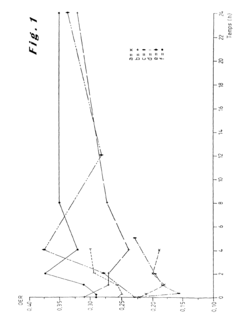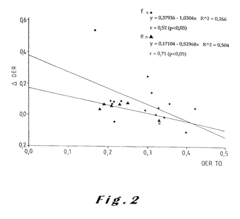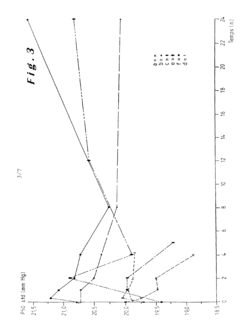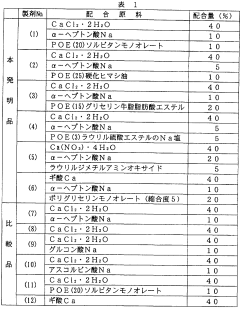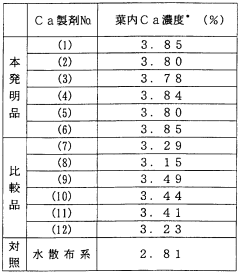How to Integrate Hypertonic Solutions in Agricultural Practices?
Hypertonic Solutions in Agriculture: Background and Objectives
Hypertonic solutions have emerged as a promising avenue in agricultural practices, offering innovative approaches to address various challenges in crop production and management. The integration of these solutions into agriculture represents a convergence of scientific advancements and practical farming techniques, aiming to enhance crop yield, improve resource efficiency, and mitigate environmental impacts.
The concept of hypertonic solutions in agriculture stems from the fundamental principles of osmosis and cellular biology. These solutions, characterized by their higher solute concentration compared to the surrounding environment, have the potential to manipulate plant physiology and soil conditions in ways that can benefit crop growth and development. The historical context of this technology can be traced back to early experiments in plant physiology, but its application in large-scale agriculture is a relatively recent development.
As global agriculture faces increasing pressure from climate change, population growth, and resource scarcity, the integration of hypertonic solutions offers a promising pathway to address these challenges. The primary objectives of this technological approach include improving water use efficiency, enhancing nutrient uptake, managing soil salinity, and boosting crop resilience to environmental stresses.
The evolution of hypertonic solution technology in agriculture has been marked by significant milestones. Early research focused on understanding the osmotic effects on plant cells, which laid the groundwork for more applied studies. Subsequent developments have seen the refinement of solution formulations, application methods, and the exploration of synergies with other agricultural technologies such as precision farming and biotechnology.
Current trends in the field indicate a growing interest in tailoring hypertonic solutions to specific crop types and environmental conditions. Research is increasingly focused on optimizing the composition of these solutions to maximize beneficial effects while minimizing potential drawbacks. Additionally, there is a push towards developing sustainable and eco-friendly formulations that align with the principles of regenerative agriculture.
The integration of hypertonic solutions in agricultural practices intersects with several other technological domains, including irrigation systems, soil science, and plant genetics. This interdisciplinary nature of the technology presents both opportunities and challenges, requiring a holistic approach to research and implementation.
Looking ahead, the trajectory of hypertonic solution technology in agriculture points towards more sophisticated, targeted applications. Future developments are likely to involve advanced delivery systems, real-time monitoring of plant responses, and the use of artificial intelligence to optimize solution formulations and application strategies. These advancements aim to further enhance the efficiency and effectiveness of hypertonic solutions in addressing the complex challenges facing modern agriculture.
Market Analysis for Hypertonic Solution Applications
The market for hypertonic solutions in agricultural practices is experiencing significant growth, driven by the increasing need for sustainable and efficient farming methods. As global water scarcity becomes more prevalent, farmers are seeking innovative solutions to optimize water usage and enhance crop yields. Hypertonic solutions offer a promising approach to address these challenges, leading to a surge in market demand.
The agricultural sector represents the primary market for hypertonic solution applications, with a particular focus on greenhouse cultivation, hydroponics, and precision farming. These segments are expected to drive the majority of market growth in the coming years. Additionally, there is a growing interest in hypertonic solutions for soil remediation and salinity management in arid and semi-arid regions, further expanding the potential market.
Market analysis indicates that the adoption of hypertonic solutions in agriculture is most prevalent in developed countries with advanced farming technologies. North America and Europe currently lead the market, with Asia-Pacific showing rapid growth potential. Emerging economies in South America and Africa are also beginning to explore hypertonic solution applications, presenting new opportunities for market expansion.
The market is characterized by a mix of established agrochemical companies and innovative startups specializing in agricultural technology. Key players are investing heavily in research and development to improve the efficacy and cost-effectiveness of hypertonic solutions. This competitive landscape is driving innovation and contributing to market growth.
Consumer trends towards organic and sustainable farming practices are influencing the development of eco-friendly hypertonic solutions. This shift is creating new market segments and driving demand for natural and biodegradable formulations. As a result, manufacturers are focusing on developing plant-based and organic hypertonic solutions to cater to this growing consumer preference.
The market for hypertonic solutions in agriculture is closely tied to global food security concerns and the push for increased agricultural productivity. Government initiatives and subsidies aimed at promoting water-efficient farming practices are expected to further stimulate market growth. Additionally, the rising adoption of smart farming technologies and precision agriculture is creating synergies with hypertonic solution applications, enhancing their market potential.
While the market shows promising growth, challenges such as high initial implementation costs and the need for farmer education remain. Overcoming these barriers will be crucial for widespread adoption and market expansion. As research continues to demonstrate the benefits of hypertonic solutions in various agricultural applications, the market is projected to experience sustained growth in the coming years.
Current Challenges in Agricultural Hypertonic Solution Use
The integration of hypertonic solutions in agricultural practices faces several significant challenges that hinder widespread adoption and optimal utilization. One of the primary obstacles is the lack of standardized application protocols across diverse crop types and soil conditions. Farmers and agronomists struggle to determine the appropriate concentration, frequency, and timing of hypertonic solution applications, leading to inconsistent results and potential crop damage.
Another major challenge is the high initial cost associated with implementing hypertonic solution systems. The required infrastructure, including specialized irrigation equipment and storage facilities, can be prohibitively expensive for small-scale farmers or those in developing regions. This economic barrier limits the accessibility of the technology to a broader agricultural community.
Environmental concerns also pose significant challenges. The long-term effects of hypertonic solutions on soil health, microbial communities, and surrounding ecosystems are not fully understood. There are concerns about potential soil salinization, altered nutrient cycling, and impacts on beneficial soil organisms. These environmental uncertainties create hesitation among farmers and policymakers in fully embracing the technology.
Water scarcity in many agricultural regions presents another hurdle. Hypertonic solutions often require additional water for application and may increase overall water consumption in some cases. This conflicts with global efforts to promote water conservation in agriculture, particularly in arid and semi-arid regions where water resources are already strained.
The complexity of managing hypertonic solutions in conjunction with other agricultural inputs poses a significant challenge. Farmers must carefully balance the use of hypertonic solutions with traditional fertilizers, pesticides, and irrigation practices. This intricate management requires advanced knowledge and skills that many farmers may lack, leading to suboptimal results or misuse of the technology.
Additionally, there is a shortage of comprehensive research and field trials across various crops and climatic conditions. This lack of extensive, long-term data makes it difficult for agricultural experts to provide confident recommendations and for farmers to make informed decisions about adopting hypertonic solution practices.
Regulatory challenges also exist, as many countries lack clear guidelines or approval processes for the use of hypertonic solutions in agriculture. This regulatory uncertainty can deter investment in research and development, as well as commercial adoption of the technology.
Existing Hypertonic Solution Integration Methods
01 Medical applications of hypertonic solutions
Hypertonic solutions are used in various medical applications, including wound healing, reducing edema, and treating certain medical conditions. These solutions have a higher solute concentration than body fluids, which can help draw excess fluid from tissues and promote healing.- Medical applications of hypertonic solutions: Hypertonic solutions are used in various medical applications, including treatment of edema, intracranial pressure reduction, and as a component in wound healing therapies. These solutions can help draw excess fluid from tissues and promote osmotic balance in the body.
- Formulation of hypertonic solutions for specific treatments: Hypertonic solutions are formulated with specific concentrations and compositions for targeted treatments. These may include saline solutions, sugar-based solutions, or combinations of electrolytes designed to address particular medical conditions or physiological imbalances.
- Use of hypertonic solutions in cell culture and preservation: Hypertonic solutions play a crucial role in cell culture techniques and preservation of biological samples. They can be used to maintain cell viability, induce specific cellular responses, or as part of cryopreservation protocols for long-term storage of cells and tissues.
- Hypertonic solutions in ophthalmic applications: Specialized hypertonic solutions are developed for ophthalmic use, such as eye drops for treating dry eye syndrome or reducing corneal edema. These solutions help maintain proper osmolarity of the tear film and can alleviate certain eye conditions.
- Novel delivery systems for hypertonic solutions: Innovative delivery systems are being developed to improve the administration and efficacy of hypertonic solutions. These may include controlled-release formulations, nasal sprays, or specialized devices designed to optimize the delivery of hypertonic solutions for specific medical applications.
02 Formulation of hypertonic solutions
The formulation of hypertonic solutions involves careful selection of solutes and their concentrations. Common ingredients include salts, sugars, and other osmotically active compounds. The composition is tailored to achieve specific osmotic effects and therapeutic outcomes.Expand Specific Solutions03 Use in cell culture and preservation
Hypertonic solutions play a crucial role in cell culture techniques and preservation of biological materials. They can be used to control cell volume, induce plasmolysis, and protect cells during cryopreservation processes.Expand Specific Solutions04 Applications in food and beverage industry
Hypertonic solutions are utilized in the food and beverage industry for various purposes, including food preservation, flavor enhancement, and texture modification. They can also be used in the production of sports drinks and other functional beverages.Expand Specific Solutions05 Environmental and industrial uses
Hypertonic solutions find applications in environmental remediation and industrial processes. They can be used for soil treatment, wastewater management, and in certain manufacturing processes where osmotic effects are beneficial.Expand Specific Solutions
Key Players in Agricultural Hypertonic Solution Industry
The integration of hypertonic solutions in agricultural practices is an emerging field with significant potential. The market is in its early growth stage, driven by increasing demand for sustainable and efficient farming methods. While the market size is still relatively small, it is expected to expand rapidly as more farmers adopt these innovative techniques. The technology's maturity varies across applications, with companies like Bayer CropScience LP and Syngenta Participations AG leading in research and development. Universities such as the University of Liege and Shandong Agricultural University are contributing to advancing the scientific understanding of hypertonic solutions in agriculture. The competitive landscape is diverse, with both established agrochemical companies and innovative startups like Farmship, Inc. vying for market share.
Bayer CropScience LP
Indian Council of Agricultural Research
Innovative Hypertonic Solution Application Techniques
- A medicinal composition comprising hypertonic sodium chloride, a vasodilator, and a phosphate source, which reduces hemoglobin's intrinsic affinity for oxygen, increases oxygen transport, and enhances tissue oxygen extraction capacity, while maintaining acidosis to improve oxygen delivery to tissues.
- A fertilizer absorption enhancer composition combining a surfactant and heptonic acid or its salt, applied as an aqueous solution to plant roots and leaves, enhances the absorption of fertilizer components like calcium, preventing phytotoxicity and improving nutrient distribution within the plant.
Environmental Impact of Hypertonic Solutions in Farming
The integration of hypertonic solutions in agricultural practices has significant environmental implications that warrant careful consideration. These solutions, characterized by their high solute concentration, can affect soil composition, water resources, and local ecosystems in various ways.
One of the primary environmental concerns is the potential for soil salinization. Hypertonic solutions, when applied repeatedly or in excessive amounts, can lead to an accumulation of salts in the soil. This increased salinity can adversely affect soil structure, reducing its ability to retain water and nutrients. Over time, this may result in decreased soil fertility and productivity, potentially leading to land degradation and desertification in extreme cases.
Water resource management is another critical aspect impacted by the use of hypertonic solutions. These solutions can alter the natural water balance in agricultural systems. While they may improve water use efficiency in some cases by reducing evaporation and increasing plant water uptake, they can also lead to increased water demand if not managed properly. This could strain local water resources, particularly in water-scarce regions.
The use of hypertonic solutions may also affect local biodiversity. Changes in soil chemistry can influence the composition of soil microbiota, potentially disrupting beneficial microbial communities that play crucial roles in nutrient cycling and plant health. Furthermore, runoff containing these solutions can impact nearby aquatic ecosystems, altering pH levels and nutrient balances in water bodies.
However, it's important to note that the environmental impact of hypertonic solutions is not uniformly negative. When used judiciously, these solutions can contribute to more efficient resource use in agriculture. By enhancing plant stress tolerance and improving nutrient uptake, they can potentially reduce the need for chemical fertilizers and pesticides, thereby mitigating some forms of agricultural pollution.
The long-term sustainability of using hypertonic solutions in agriculture depends on developing and implementing best management practices. This includes optimizing application rates and frequencies, monitoring soil and water quality, and integrating their use with other sustainable farming techniques. Additionally, research into the development of more environmentally friendly hypertonic solutions, such as those derived from organic sources or designed to have minimal residual effects, could help mitigate potential negative impacts.
In conclusion, while hypertonic solutions offer potential benefits for agricultural productivity, their environmental impact must be carefully managed. Balancing the agronomic advantages with ecological considerations is crucial for ensuring the sustainable integration of this technology in modern farming practices.
Regulatory Framework for Agricultural Hypertonic Solutions
The regulatory framework for agricultural hypertonic solutions is a critical aspect of integrating these innovative practices into modern farming. As the use of hypertonic solutions in agriculture gains traction, governments and regulatory bodies are developing comprehensive guidelines to ensure their safe and effective implementation.
At the forefront of these regulations is the requirement for extensive testing and approval processes before hypertonic solutions can be introduced into agricultural systems. These processes typically involve rigorous evaluations of the solutions' impact on soil health, crop yield, and environmental sustainability. Regulatory bodies often mandate long-term studies to assess potential cumulative effects on ecosystems and groundwater quality.
Safety standards for the handling and application of hypertonic solutions are another key component of the regulatory framework. These standards often include guidelines for personal protective equipment, storage requirements, and application methods to minimize risks to farmers and the environment. Additionally, regulations may specify maximum concentration levels and application frequencies to prevent soil salinization or other adverse effects.
Environmental impact assessments are increasingly becoming a mandatory part of the approval process for agricultural hypertonic solutions. These assessments evaluate the potential effects on local flora and fauna, water resources, and air quality. Regulators may require manufacturers to provide detailed data on the biodegradability and persistence of the solutions in various environmental conditions.
Labeling and documentation requirements form another crucial aspect of the regulatory framework. Manufacturers must provide clear instructions for use, safety precautions, and potential environmental impacts on product labels. Some jurisdictions also mandate the inclusion of traceability information to facilitate product recalls if necessary.
Monitoring and reporting mechanisms are often built into the regulatory framework to ensure ongoing compliance and gather data on the long-term effects of hypertonic solution use. Farmers may be required to maintain detailed records of application rates, timing, and observed impacts on crop health and yield.
As the technology evolves, regulatory frameworks are designed to be adaptable, allowing for the incorporation of new scientific findings and technological advancements. This flexibility ensures that regulations remain relevant and effective in promoting sustainable agricultural practices while safeguarding human health and the environment.
